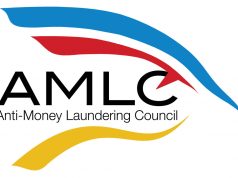Peso-renminbi trading facility to ease volatility
By Melissa Luz T. Lopez, Senior Reporter

THE NEW peso-renminbi (RMB) spot trading facility is expected to help ease volatility even in the dollar currency market, a Bangko Sentral ng Pilipinas (BSP) official said, with industry players eyeing to roll out the platform by November.
BSP Deputy Governor Chuchi G. Fonacier said yesterday that the peso-renminbi exchange rate will also be “market-determined” once rolled out.
The Bank of China (BoC) Manila led the signing of an agreement with 13 other banks operating in the country to create the Philippine RMB Trading Community.
Once established, companies and individuals transacting with Chinese counterparts can directly convert payments and remittances to the renminbi in big volumes, doing away with the need to use the dollar first.
“At present, the PHP and RMB are priced against the US dollar as an intermediate peg. This subjects them to conversion and other friction costs… Now, the Philippine peso can be directly priced against the RMB,” Ms. Fonacier said in her speech during the signing ceremony held at the Makati Shangri-la Hotel.
In turn, this will promote payment efficiency and less costs for importers and exporters.
“Definitely, it will ease volatility (in the peso-dollar market) because there’s an alternative currency,” Ms. Fonacier also told reporters about its possible impact on the existing foreign exchange market.
The peso has depreciated against the dollar in recent months, reeling from global volatilities and negative market sentiment towards emerging market currencies.
BoC has been designated as the clearing bank of the renminbi in the Philippines. BoC Manila Country Head Deng Jun noted that they are looking to get the ball rolling “as early as next month,” with transaction volumes reaching “over 10 billion renminbi” this year.
Members of the RMB community are the Asia United Bank Corp., Bank of Commerce, BDO Unibank, Inc., Bank of the Philippine Islands, China Banking Corp., East West Banking Corp., Metropolitan Bank & Trust Co., Philippine Bank of Communications, Philippine National Bank, Philippine Business Bank, Rizal Commercial Banking Corp., Sterling Bank of Asia, Security Bank Corp. and UnionBank of the Philippines, Inc.
Finance Secretary Carlos G. Dominguez III said local businessmen could have saved around “three percent of transaction values” if direct conversion from peso to renminbi had been made available earlier. With the new agreement, he expects the new currency trading platform will take “not more than a few months” to build.
Ms. Fonacier clarified that the BSP will oversee the new facility, noting it will review the framework as well as the code of conduct for traders to be drafted by the banks.
Work towards building a peso-yuan spot facility started back in 2013, with the local RMB transfer system launched a year later.
BSP officials and economists said the creation of the new currency exchange platform will help boost trade and tourism between China and the Philippines.
China is the country’s top trading partner so far this year, with total trade amounting to $2.864 billion as of August, according to the Philippine Statistics Authority.
The country has also received 972,550 Chinese tourists from January-September, the second-largest market next to South Korean visitors. Beijing has also been a source of official development assistance for public infrastructure projects to support the Duterte administration’s “Build, Build, Build” program.
The Philippines and China has grown closer under this administration. Chinese President Xi Jinping is set to visit President Rodrigo R. Duterte in Manila this November.



